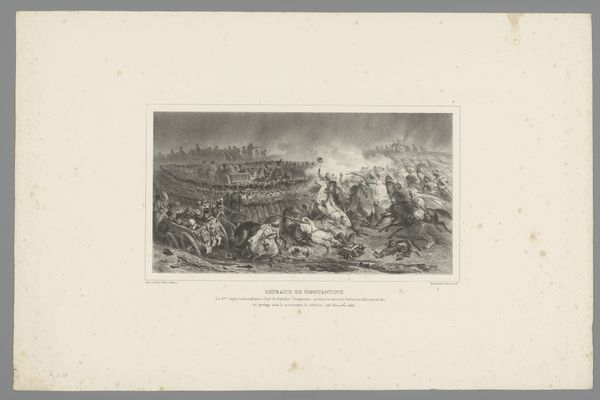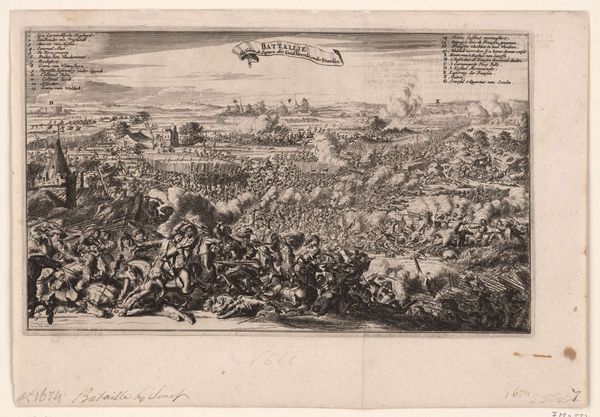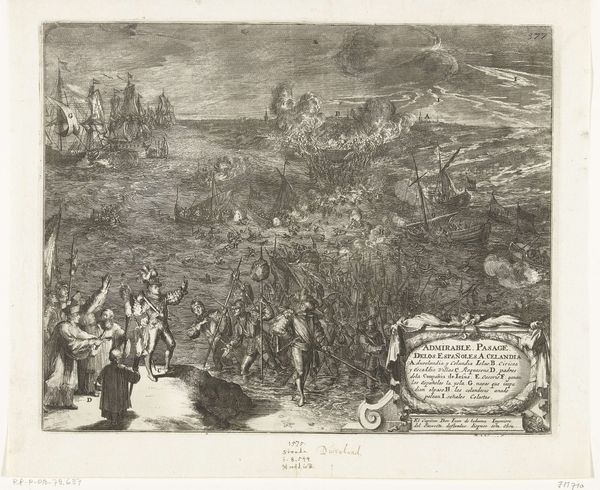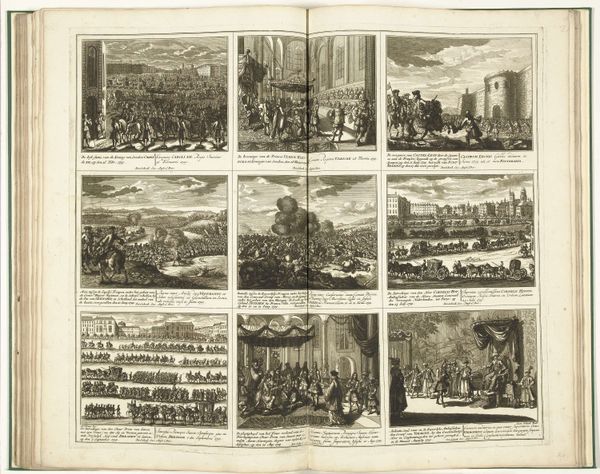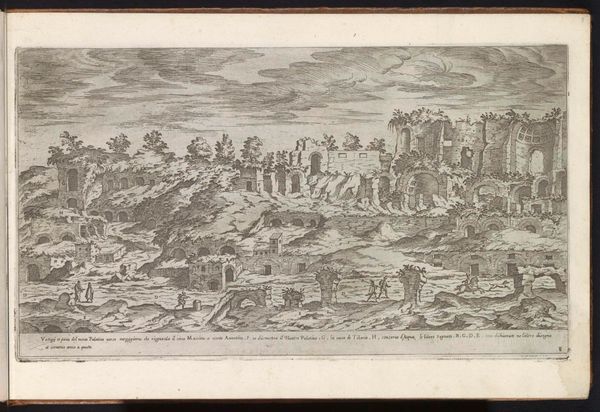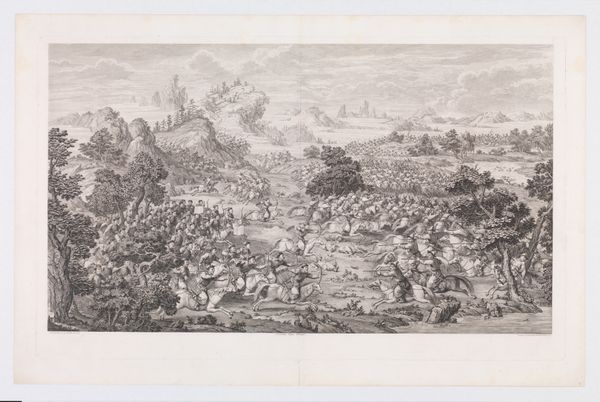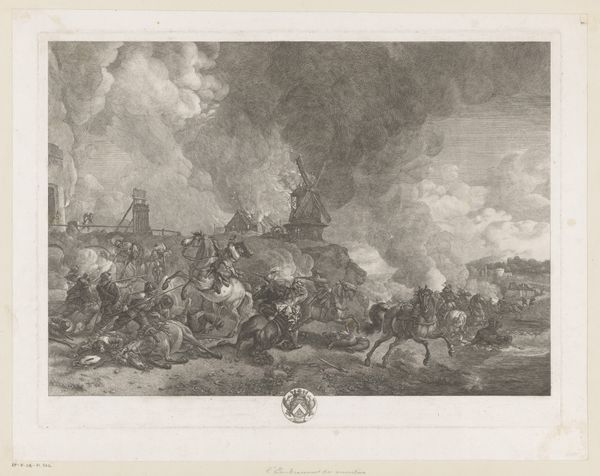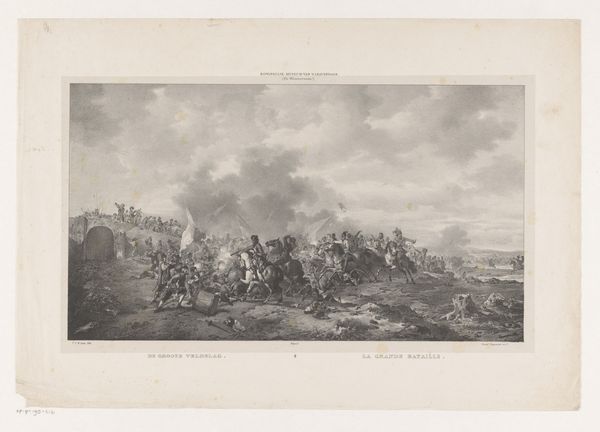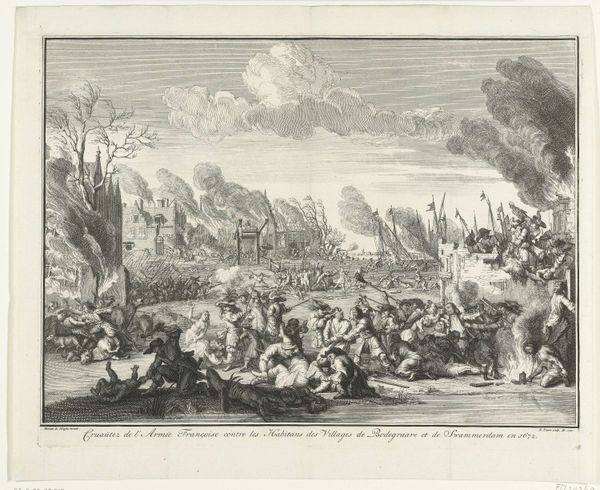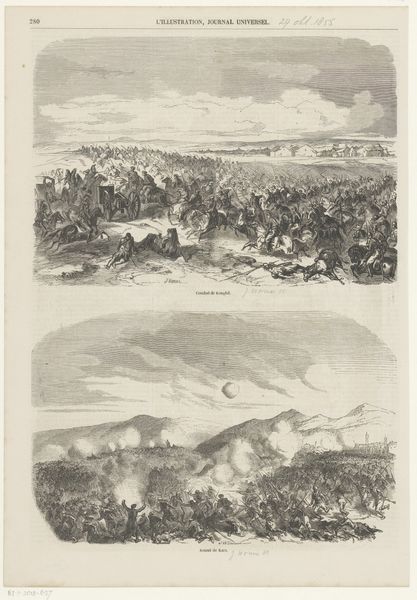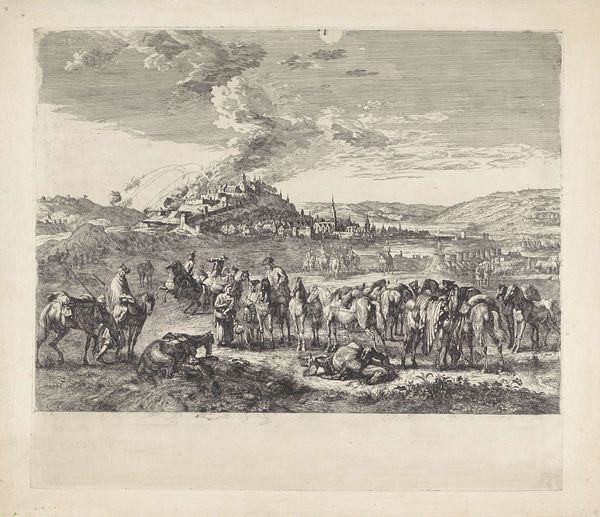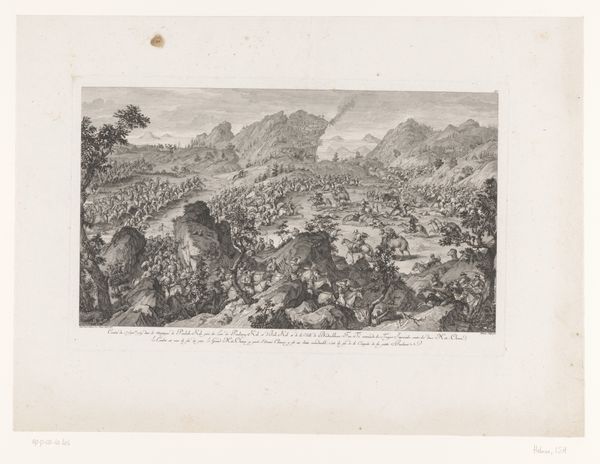
Zes scènes uit het beleg en de verovering van Grave door Willem III, 1674 1674
0:00
0:00
print, etching
#
narrative-art
#
baroque
# print
#
etching
#
cityscape
#
history-painting
Dimensions: height 434 mm, width 546 mm
Copyright: Rijks Museum: Open Domain
Here we see six scenes from the siege and conquest of Grave by William III, an etching made in 1674 by Romeyn de Hooghe. De Hooghe was working in a Dutch Republic that was trying to establish its identity on the world stage. This print captures a pivotal moment in Dutch history, reflecting the ongoing power struggles and military campaigns that defined the era. Through detailed depictions of battle scenes, De Hooghe conveys both the chaos and calculated strategy of warfare. Note how the scenes move from alarm and attack, through the French retreat. The choice to document these events speaks to the desire to immortalize Dutch military achievements and assert their significance in European politics. It invites reflection on the human cost of conflict and the ways in which such events shape national identity. What does it mean to define a nation through war? What gets remembered, and what gets left out?
Comments
No comments
Be the first to comment and join the conversation on the ultimate creative platform.
